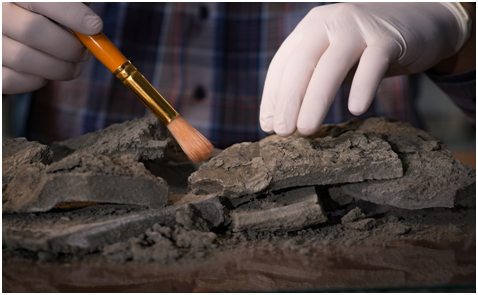Context:
The District Court in Varanasi allowed a petition seeking Carbon Dating of the structure inside the Gyanvapi mosque that the Hindu side has claimed is a ‘Shivling’.

What is Carbon dating?
- It is a widely-used method applied to establish the age of organic material, things that were once living.
- Living things have carbon in them in various forms.
- The dating method makes use of the fact that a particular isotope of carbon called C-14, with an atomic mass of 14, is radioactive, and decays at a rate that is well known.
- The most abundant isotope of carbon in the atmosphere is carbon-12 or a carbon atom whose atomic mass is 12.
- A very small amount of carbon-14 is also present.
Process
- Plants get their carbon through the process of photosynthesis, while animals get it mainly through food.
- Because plants and animals get their carbon from the atmosphere, they too acquire carbon-12 and carbon-14 isotopes in roughly the same proportion as is available in the atmosphere.
- When they die, the interactions with the atmosphere stop.
- Now, carbon-12 is stable and does not decay, while carbon-14 is radioactive. Carbon-14 reduces to one-half of itself in about 5,730 years.
- This is what is known as its ‘half-life’.
- So, after a plant or animal dies, the ratio of carbon-12 to carbon-14 in the body, or its remains, begins to change.
- This change can be measured and can be used to deduce the approximate time when the organism died.
Applications of Carbon Dating
- Age and variety of natural and even man-made materials, manuscript dating in archaeology
- Determine the factors that caused lost species, such as the age of dinosaurs or sea fossils, by studying fossils.
- Research on civilizations: Carbon dating has been used to successfully determine the majority of civilizations’ ages and ancestry.
- Researching human history, eating customs, and cultures to better understand evolution and race.
- Examining meteorites on Earth to learn about the origin of life.
